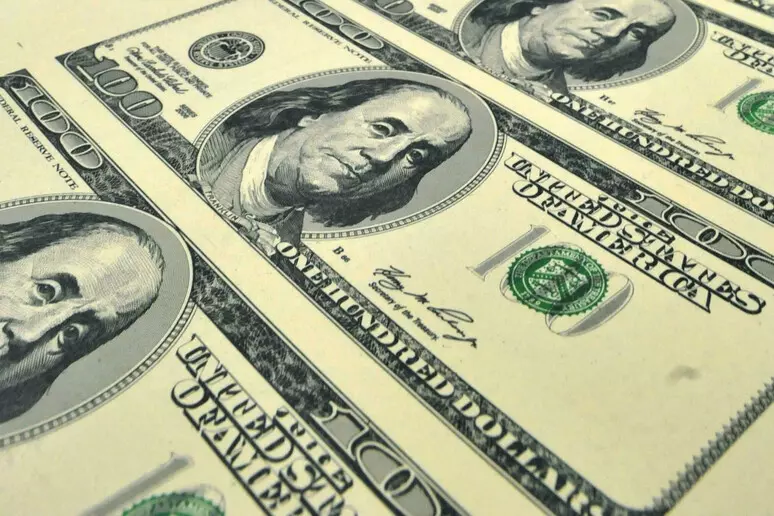The dollar stumbles to its lowest level in over three years. The decline, amounting to about 10% since the beginning of 2025, reflects a combination of rising expectations for interest rate cuts by the Federal Reserve and concerns over the country’s trade policies, which are pushing capital towards safer havens.
On Thursday, the Bloomberg Dollar Spot Index, the financial index measuring the strength of the U.S. dollar, fell by 0.8%, reaching its lowest point since April 2022. All major Group of Ten currencies benefited: the euro hit its highest level since 2021, while the pound sterling reached a three-year peak.
The new slide came after the release of May’s producer price inflation data, which showed a greater-than-expected slowdown. This, combined with other signs of economic weakness, fueled forecasts of an upcoming monetary easing by the Fed, which will meet again on June 18.
The situation worsened following an announcement by President Donald Trump, who intends to unilaterally notify new tariffs to trade partners. Helen Given, an analyst at Monex Inc., a Japanese financial services firm, told Bloomberg magazine that these tariff threats are fueling such uncertainty as to strengthen bets on an expansionary Fed intervention. Traders, she added, expect the dollar to fall another 5% to 6% over the course of the year.
Paul Tudor Jones, founder of Tudor Investment Corp., a hedge fund and asset management company, also spoke cautiously, predicting a 10% weakening within twelve months, driven by a “drastic” cut in short-term rates.
In the first months of 2025, the greenback has already dropped more than 8%. Weighing on the currency are growing concerns about the impact of the Republican administration’s fiscal and trade policies, which several Wall Street strategists believe will continue to pressure the dollar. Data from the Commodity Futures Trading Commission, the U.S. federal agency regulating derivatives markets, shows an increasing speculative short position worth around $12.2 billion.
Investors are also worried about the risk of a return of inflation coupled with a recession. Recurring unemployment claims have risen to record levels since late 2021, signaling a struggling labor market. Service sector activity, according to the ISM, has contracted for the first time in nearly a year.
Despite these shadows, a positive signal came from the 30-year Treasury auction, which attracted robust demand, indicating some investors still see value in long-term U.S. bonds.
At 4:00 p.m. on Thursday in New York, the dollar index was down 0.6%. The euro was trading at $1.1579, after earlier reaching 1.1631. The British pound also gained, rising 0.4%.
Analysts at Pictet, one of the leading independent private banks and asset management firms, forecast a further decline of the currency, highlighting how the White House’s unstable positions may widen the trade deficit and reduce demand for dollar-denominated assets.
The Swiss franc and euro have stood out as the best-performing currencies since the beginning of the year, with Europe benefiting from Germany’s renewed public spending boost that could strengthen continental growth.
Meanwhile, emerging market currencies have gained over 6%, supported by the general weakening of the dollar. According to MUFG analysts, led by Derek Halpenny, the second half of 2025 could see an acceleration of the dollar’s downward trend amid an increasingly fragile environment.












